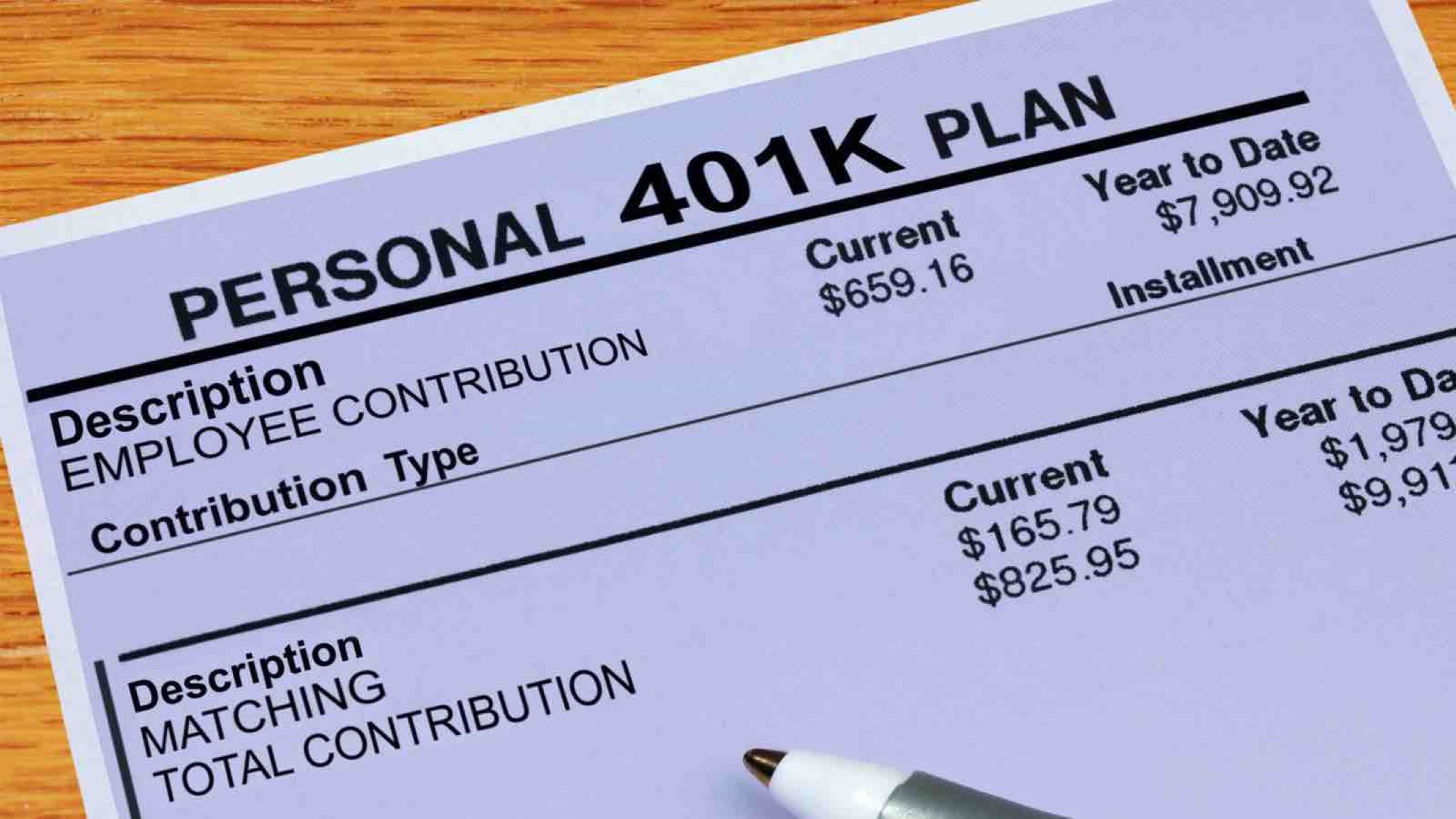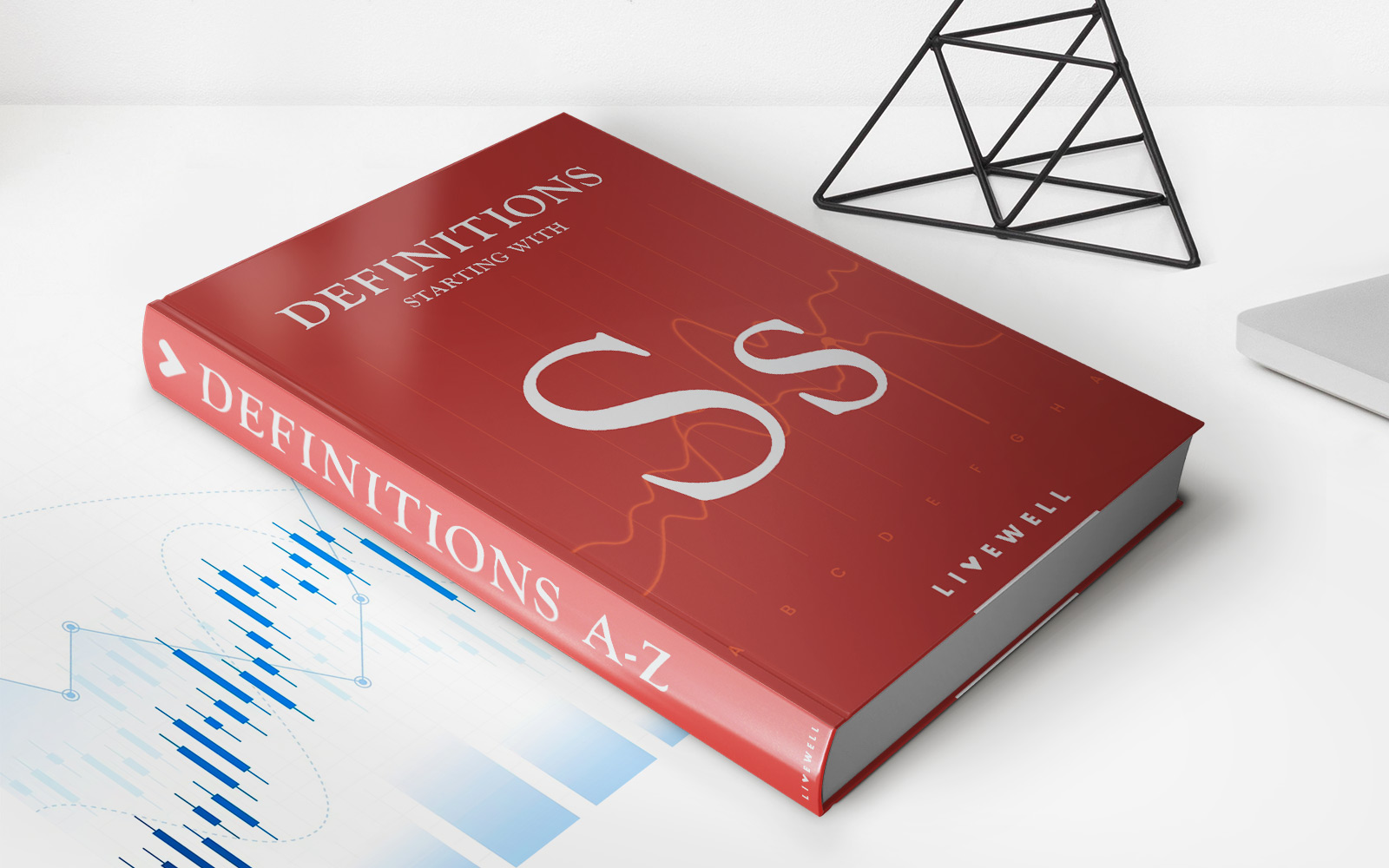Home>Finance>What Happens To My 401K Loan When I Change Jobs


Finance
What Happens To My 401K Loan When I Change Jobs
Published: October 17, 2023
Learn what happens to your 401K loan when you change jobs and how it impacts your personal finance.
(Many of the links in this article redirect to a specific reviewed product. Your purchase of these products through affiliate links helps to generate commission for LiveWell, at no extra cost. Learn more)
Table of Contents
- Introduction
- Understanding 401K Loans
- Taking Out a 401K Loan
- Repaying a 401K Loan While Employed
- What Happens to a 401K Loan When You Change Jobs
- Option 1: Repaying the 401K Loan in Full
- Option 2: Rolling Over the 401K Loan into a New Employer’s Plan
- Option 3: Defaulting on the 401K Loan
- Consequences of Defaulting on a 401K Loan
- Alternative Strategies for Dealing with a 401K Loan When Changing Jobs
- Conclusion
Introduction
When it comes to planning for your future, saving for retirement is a crucial step. Many employees contribute to a 401K plan offered by their employer, which allows them to save and invest a portion of their income for retirement. However, there may be times when unexpected expenses arise, leading some individuals to consider taking out a loan against their 401K balance.
But what happens when you change jobs while you have an outstanding 401K loan? It’s a common concern among employees who are considering a career move or have been offered a new opportunity elsewhere. Understanding the implications of a 401K loan when changing jobs is vital to make informed decisions about your finances.
In this article, we’ll explore what happens to your 401K loan when you change jobs, as well as the options available to you for managing the loan. By the end, you’ll have a clear understanding of how to handle your 401K loan during a career transition.
Understanding 401K Loans
A 401K loan is a borrowing option that allows plan participants to borrow money from their own 401K savings. This type of loan can be an attractive option for those who need quick access to funds because it doesn’t require a credit check. Unlike a traditional loan, when you borrow from your 401K, you are essentially borrowing from yourself.
Here are a few key points to understand about 401K loans:
- Eligibility: Not all 401K plans offer loan options, so it’s important to check with your plan administrator to see if your plan allows loans.
- Borrowing Limits: The maximum amount you can borrow from your 401K is typically the lesser of $50,000 or 50% of your vested account balance.
- Repayment Terms: 401K loans typically have a repayment period ranging from 5 to 10 years, although the specific terms may vary depending on your plan’s guidelines.
- Interest Rates: The interest rates on 401K loans are typically lower than those of traditional loans, as you are essentially paying interest to yourself.
- Use of Funds: Unlike some other types of loans, there are typically no restrictions on how you can use the funds borrowed from your 401K. However, it’s important to keep in mind that the primary purpose of your 401K is saving for retirement, so borrowing from it should be done judiciously.
While a 401K loan can be a convenient source of funds in times of need, it’s important to carefully consider the potential consequences and implications of borrowing from your retirement savings. Understanding the terms and conditions of the loan, as well as the impact it can have on your future retirement savings, is essential to make an informed decision.
Taking Out a 401K Loan
Before you decide to take out a 401K loan, it’s important to understand the process and requirements involved. Here’s how you can go about taking out a loan from your 401K:
- Check your plan’s eligibility: As mentioned earlier, not all 401K plans allow for loans. Review your plan documents or consult with your plan administrator to determine if your plan offers this option.
- Evaluate your borrowing needs: Consider the amount of money you need and determine if a 401K loan is the best option for your specific financial situation. It’s crucial to remember that the purpose of your 401K is to save for retirement, so borrowing from it should be done with careful consideration.
- Review the loan terms: Each 401K plan sets its own rules and guidelines for loans, so it’s important to carefully review the terms and conditions. Take note of factors such as interest rates, repayment periods, and any fees associated with the loan.
- Complete the loan application: Contact your plan administrator or visit the online portal provided by your plan to begin the loan application process. You may be required to provide details such as the loan amount, intended use of funds, and repayment terms.
- Submit the necessary documentation: Depending on your plan’s requirements, you may need to provide additional documentation such as proof of hardship (if applicable), a loan agreement, or any other forms requested by your plan.
- Wait for loan approval: Once you’ve submitted your application and required documents, your plan administrator will review and approve your loan request. This process typically takes a few business days.
- Receive the funds: If your loan application is approved, the funds will be distributed to you either through a direct deposit or a check, depending on your plan’s procedures.
It’s important to note that borrowing from your 401K should not be a hasty decision. Carefully consider the potential impact on your retirement savings and weigh it against your immediate financial needs. If a 401K loan is the best option for you, be sure to repayment terms to avoid penalties and maintain the growth of your retirement savings.
Repaying a 401K Loan While Employed
Once you have taken out a 401K loan, it’s important to understand the repayment process and fulfill your obligations. Repaying your 401K loan while remaining employed typically involves the following steps:
- Set up automatic deductions: Many employers offer the option to have loan repayments automatically deducted from your paycheck. This ensures that you make timely and consistent payments towards your loan.
- Review the repayment schedule: Your loan agreement will outline the repayment schedule, including the frequency of payments and the amount due. Make sure to review these details and adjust your budget accordingly.
- Continue contributing to your 401K: While repaying your loan, it’s crucial to continue making contributions to your 401K if your financial situation allows. This will help ensure that you continue to save for retirement and take advantage of any employer matching contributions.
- Keep track of your loan balance: It’s important to monitor your loan balance regularly to ensure it’s being paid down. This can typically be done by reviewing your account statements or checking your plan’s online portal.
- Plan for early repayment: If you have the means to do so, consider paying off your 401K loan before the scheduled repayment period. By paying it off early, you can minimize interest charges and redirect your funds towards other financial goals.
It’s important to remember that failing to repay your 401K loan can have significant consequences, so it’s crucial to fulfill your repayment obligations. Defaulting on your loan can result in taxes, penalties, and the potential loss of retirement savings.
By responsibly managing your loan repayments while remaining employed, you can ensure that you fulfill your financial obligations and preserve the long-term growth of your 401K savings.
What Happens to a 401K Loan When You Change Jobs
Changing jobs can be an exciting and challenging time, but it’s essential to understand the implications for any outstanding 401K loans you may have. Here are the possible scenarios for what happens to your 401K loan when you change jobs:
- Option 1: Repaying the 401K Loan in Full:
- Option 2: Rolling Over the 401K Loan into a New Employer’s Plan:
- Option 3: Defaulting on the 401K Loan:
In some cases, your new employer’s 401K plan may allow you to repay your existing 401K loan by making regular payments. This option allows you to continue repaying the loan without any major disruptions. However, it’s important to check with your new employer’s plan to see if they allow for loan repayment.
If your new employer’s 401K plan allows for it, you may have the option to roll over your existing 401K loan balance into the new plan. This means that you would continue making loan repayments through the new employer’s plan, ensuring that the loan remains in good standing.
In some cases, changing jobs may lead to defaulting on your 401K loan. This typically occurs when you are unable to repay the loan in full and neither your new employer’s plan nor the current plan allow for loan repayment or rollover. Defaulting on a 401K loan can have serious consequences, such as taxes, penalties, and potential loss of retirement savings, so it’s essential to explore alternative options before resorting to defaulting.
It’s important to note that the specific options available to you will depend on the policies of your new employer’s 401K plan and the plan from your previous employer. Before making any decisions, it’s advisable to consult with your plan administrators or a financial advisor to understand the implications and explore the best course of action.
In the next sections, we will delve deeper into each option and discuss the consequences of defaulting on a 401K loan.
Option 1: Repaying the 401K Loan in Full
One option you may have when changing jobs with an outstanding 401K loan is to repay the loan in full. This option allows you to continue making regular payments to satisfy your loan obligations, ensuring that the loan remains in good standing.
To determine if this option is available to you, you’ll need to check with your new employer’s 401K plan. Some plans allow participants to continue making loan repayments from their paycheck, even if they had taken out the loan from a previous employer’s plan. This allows for a seamless transition and avoids any potential disruptions in loan repayment.
If your new employer’s plan does allow for loan repayment, you’ll need to carefully review the repayment terms and ensure that you make timely payments. It’s crucial to budget accordingly to avoid missing any payment deadlines, as defaulting on your loan can lead to significant consequences.
Repaying the 401K loan in full has several advantages:
- Preserving retirement savings: By repaying the loan, you avoid depleting your 401K savings, ensuring that your retirement savings remain intact.
- Maintaining a good credit history: Timely repayment of the loan helps maintain a positive credit history, which can be beneficial for future financial endeavors.
- Avoiding taxes and penalties: By repaying the loan, you avoid taxes and penalties that would be imposed if you defaulted on the loan.
Repaying your 401K loan in full demonstrates responsible financial management and helps to safeguard your retirement savings. Be sure to review the loan terms, stay organized with your payments, and seek assistance from your plan administrator or financial advisor if you have any questions or concerns.
Option 2: Rolling Over the 401K Loan into a New Employer’s Plan
If you have an outstanding 401K loan and are changing jobs, another option to consider is rolling over the loan into your new employer’s 401K plan. This option allows you to continue making loan repayments through the new plan, ensuring that the loan remains in good standing.
To explore this option, you’ll need to check with your new employer’s 401K plan to see if they allow for loan rollovers. Not all plans permit this, so it’s essential to understand their specific policies before making any decisions.
If your new employer’s plan does allow for loan rollovers, here’s how the process generally works:
- Review loan rollover guidelines: Familiarize yourself with the rules and guidelines for loan rollovers in your new employer’s plan. This includes understanding any restrictions or limitations regarding loan amounts, repayment terms, and other relevant factors.
- Provide necessary documentation: You may be required to provide documentation from your previous employer’s plan, such as the loan agreement and outstanding loan balance, to initiate the rollover process. Consult with your plan administrator to determine the specific documents needed.
- Coordinate with both plan administrators: Work with both your previous employer’s plan administrator and your new employer’s plan administrator to ensure a smooth rollover process. They will guide you through the necessary steps and provide any additional instructions.
- Start making loan repayments through the new plan: Once the loan rollover is complete, you’ll need to resume making loan repayments through your new employer’s 401K plan. Be sure to understand the repayment terms, including the frequency and amount of payments, to avoid any issues.
Rolling over your 401K loan into a new employer’s plan offers several benefits:
- Continued loan repayment: By rolling over the loan, you can continue making regular payments towards your loan, ensuring that it remains in good standing.
- Seamless transition: Rolling over the loan allows for a smooth transition between employers while avoiding any disruptions in loan repayment.
- Consolidating retirement accounts: Consolidating your old 401K loan into your new employer’s plan may help streamline your overall retirement savings management.
It’s important to consult with both plan administrators and carefully review the terms and conditions of the new plan to ensure that loan rollover is the best option for your specific situation. By understanding the guidelines and staying organized, you can successfully roll over your 401K loan and continue repaying it with your new employer’s plan.
Option 3: Defaulting on the 401K Loan
Defaulting on a 401K loan is never an ideal option, but in some cases, when changing jobs, individuals may find themselves unable to continue making loan repayments. Defaulting on a 401K loan occurs when you fail to fulfill your loan obligations, typically by missing multiple payments or not repaying the loan in full by the designated deadline.
If you find yourself in a situation where defaulting on your 401K loan seems inevitable, it’s essential to understand the potential consequences:
- Taxes and penalties: Defaulting on a 401K loan triggers taxes and penalties. The outstanding loan balance is treated as a distribution, subjecting it to income tax, and if you are under the age of 59½, early withdrawal penalties may apply.
- Loss of retirement savings: Defaulting on a 401K loan means that the outstanding loan amount is treated as a withdrawal from your retirement savings. This can significantly deplete your retirement funds, setting you back on your long-term financial goals.
- Negative impact on credit: Defaulting on a loan can have a negative impact on your credit history. A default can be reported to credit bureaus, potentially affecting your ability to secure future loans or obtain favorable interest rates.
- Limited options for recovery: Once you default on a 401K loan, there are limited options for recovery. You may not have the ability to resume loan payments or roll over the loan into a new employer’s plan, leaving you responsible for the outstanding balance.
Defaulting on a 401K loan should be avoided if possible, as the consequences can have a significant impact on your financial situation. Before defaulting, it’s crucial to explore alternative options, such as seeking financial assistance or discussing repayment options with your plan administrator.
If defaulting on the loan becomes unavoidable, it’s important to consult with a financial advisor to understand the specific implications in your situation and develop a plan to mitigate the potential long-term repercussions.
Consequences of Defaulting on a 401K Loan
Defaulting on a 401K loan can have serious consequences that can impact both your short-term and long-term financial well-being. It’s important to understand these consequences before making any decisions regarding your loan. Here are some possible ramifications of defaulting on a 401K loan:
- Taxes and Penalties: When you default on a 401K loan, the outstanding loan balance is considered a distribution. This means that the loan amount is treated as taxable income, subjecting you to income taxes. Additionally, if you are under the age of 59½, you may also be subject to early withdrawal penalties, which can further reduce the amount of money you receive.
- Depletion of Retirement Savings: Defaulting on a 401K loan means that you’ll have to repay the outstanding balance through other means. This can lead to a significant reduction in your retirement savings, as you are no longer benefiting from the potential growth and compounding effects on the borrowed funds. Over time, this can hamper your ability to retire comfortably.
- Damaged Credit History: Defaulting on any type of loan can negatively impact your credit history. The default may be reported to credit bureaus, resulting in a lower credit score. This can make it more challenging to secure favorable interest rates or obtain credit in the future for other financial needs, such as mortgages or car loans.
- Loss of Employer Matching Contributions: Many employers offer matching contributions to their employees’ 401K plans. However, some employers have policies stating that if an employee defaults on their 401K loan, they may lose out on future matching contributions. Losing out on these contributions can be a significant financial setback.
- Risk of Financial Instability: Defaulting on a 401K loan can disrupt your overall financial stability. It may lead to increased financial stress and difficulties in meeting other financial obligations, such as paying bills or saving for other goals. This can create a cycle of financial hardship that is challenging to overcome.
It’s important to note that the specific consequences of defaulting on a 401K loan can vary depending on your individual circumstances and the policies of your employer’s plan. It’s advisable to consult with a financial advisor or a plan administrator to fully understand the implications before making any decisions regarding your loan.
Given the serious and long-lasting consequences of defaulting on a 401K loan, it’s crucial to explore alternative options and seek assistance if you find yourself in a difficult financial situation. Communication with your plan administrator and proactive financial planning can help you navigate these challenges and protect your retirement savings.
Alternative Strategies for Dealing with a 401K Loan When Changing Jobs
When facing a career transition and having an outstanding 401K loan, there are alternative strategies you can consider to manage the loan effectively. These strategies can help protect your retirement savings and minimize the potential negative consequences. Here are some alternative options to explore:
- Repay the loan in full: If financially feasible, repaying the 401K loan in full before changing jobs is the most straightforward option. By using your available funds or seeking alternative sources, such as personal savings, you can fulfill your loan obligations and preserve your retirement savings.
- Explore borrowing options outside of the 401K: Before changing jobs, consider alternative borrowing options, such as personal loans or low-interest credit cards, to cover your immediate financial needs. While these options may come with their own terms and conditions, they can help you avoid the potential drawbacks of defaulting on a 401K loan.
- Transfer the loan to a personal loan: If you have the ability to qualify for a personal loan, you may be able to transfer your 401K loan to a personal loan with more favorable terms. This can help you repay the loan while avoiding the negative consequences associated with defaulting on a 401K loan.
- Consider a partial rollover: Some employers’ plans allow for a partial rollover of your 401K loan. If your new employer’s plan permits it, you can roll over a portion of the loan balance and continue repaying the remainder through other means. This strategy can help minimize the impact on your retirement savings while ensuring that the loan remains in good standing.
- Consult a financial advisor: Seeking guidance from a financial advisor can provide valuable insights and tailored solutions for your specific situation. They can help assess your financial circumstances, explore alternative strategies, and guide you in making informed decisions about your 401K loan when changing jobs.
Each of these alternative strategies has its own considerations and implications, so it’s important to carefully weigh the pros and cons and choose the approach that best aligns with your financial goals and circumstances.
Remember, open communication with your plan administrator, exploring alternative sources of financing, and seeking professional advice can help you navigate the complexities of managing a 401K loan during a career transition.
Conclusion
When changing jobs with an outstanding 401K loan, it’s crucial to understand the options available to you and make informed decisions to safeguard your retirement savings. Defaulting on a 401K loan should be the last resort, as it can have significant financial implications. Instead, explore alternatives such as repaying the loan in full, rolling it over into a new employer’s plan, or considering other borrowing options. Seek guidance from your plan administrators or a financial advisor to understand the specific rules and implications of your plan.
Whether you choose to repay the loan, roll it over, or explore other strategies, it’s important to stay organized and maintain communication with all relevant parties. Remember that the purpose of your 401K is to save for retirement, so borrowing from it should be done wisely and with careful consideration of the potential impact on your long-term financial goals.
Changing jobs is an exciting and transformative time, and managing your 401K loan effectively is an important part of that transition. By understanding your options, being proactive in your financial planning, and seeking guidance when needed, you can navigate the challenges of a 401K loan while changing jobs and continue on the path to a secure retirement.














